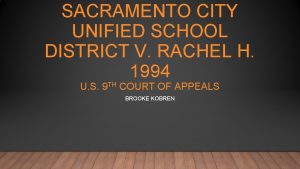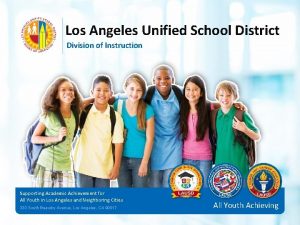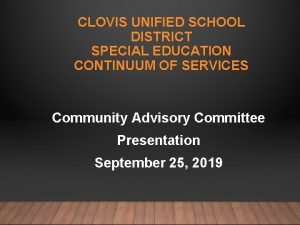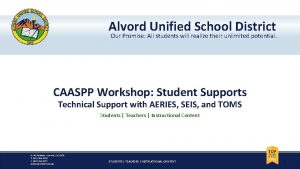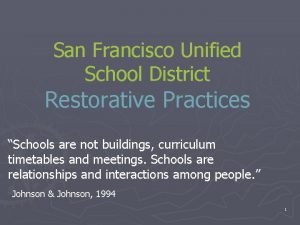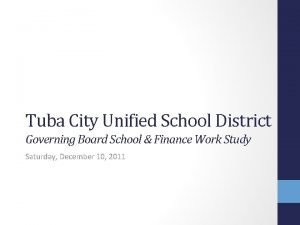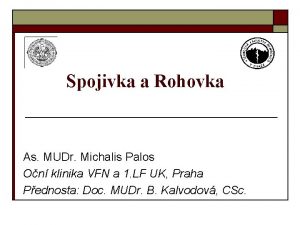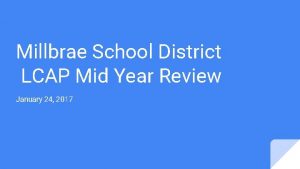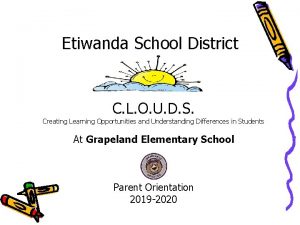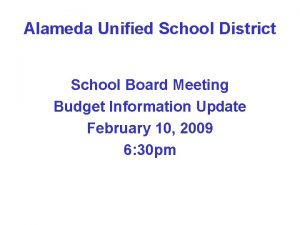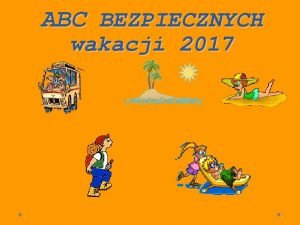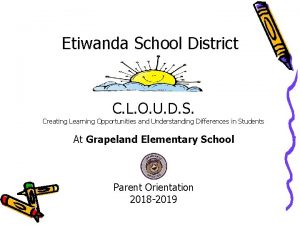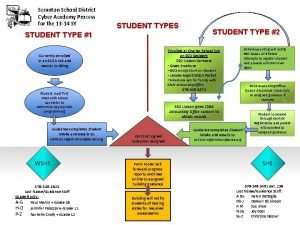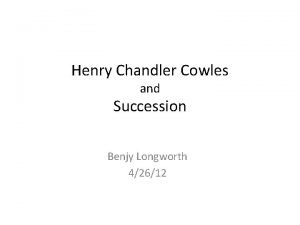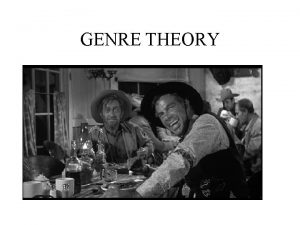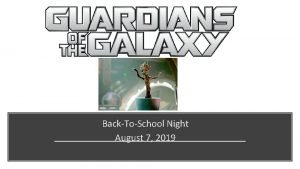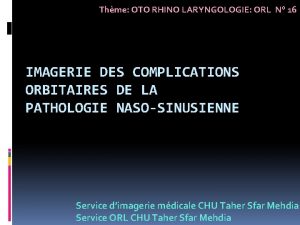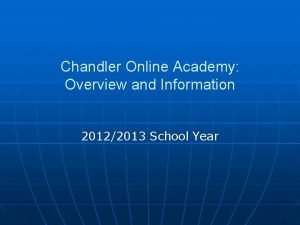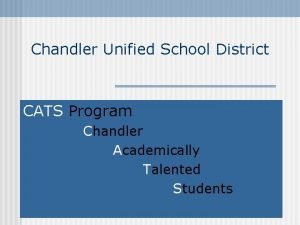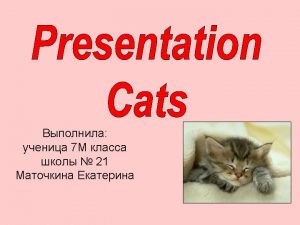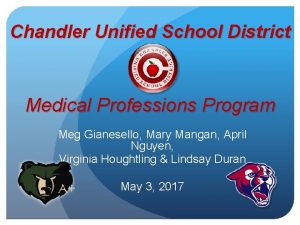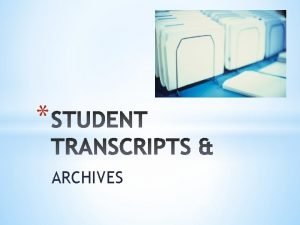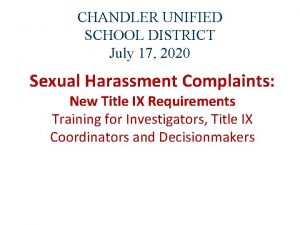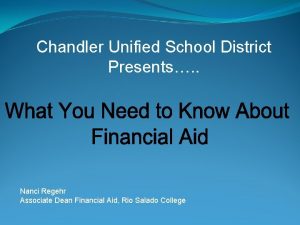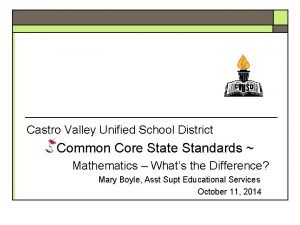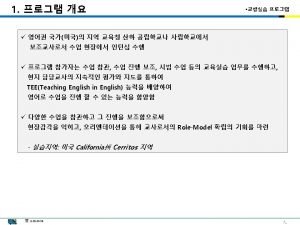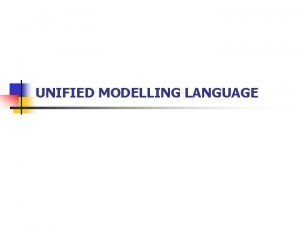Chandler Unified School District CATS Program Chandler Academically






































- Slides: 38


Chandler Unified School District CATS Program Chandler Academically Talented Students

What is a Gifted Child? “…a child who is of lawful school age, who due to superior intellect or advanced learning ability, or both, is not afforded an opportunity for otherwise attainable progress and development in regular classroom instruction and who needs appropriate gifted education services to achieve at levels commensurate with the child's intellect and ability. ” (A. R. S. 15 -779)

What is a Gifted Child? n Identified by Cognitive Abilities Test Measure Reasoning in: Verbal Quantitative Non-verbal

So, Why Self-Contained? n n “Students are not gifted part time. ” Research continues to support the selfcontained model for the top 3% of students. n Gifted children in a full-time gifted placement (special school, full-time program, or school-withina-school) when compared to equally gifted students in mixed ability classes, showed an academic effect that was both substantial and positive. (Kulik 2004, A Nation Deceived) n Acceleration contributes greatly to the academic achievement of bright students. (Kulik 2004, A Nation Deceived)

Characteristics of Gifted n n n n Variety of Interests Excellent memory Long attention span Unusual curiosity Persistence in attacking difficult mental tasks Good problem solving/reasoning abilities Rapid learning ability High degree of energy § Above average language development § Preference for older friends § Heightened sensitivity § Non-conformity behavior § Keen powers of observation § Vivid imagination § Good sense of humor § Sense of justice and moral sensitivity

Program Accommodations § Exposure to ideas at a faster pace § Access to challenging curriculum and intellectual peers § Opportunities to contribute to solutions of meaningful problems § Freedom to pursue individual interests within a given topic §Exposure to increasingly difficult vocabulary and concepts § Integration of a variety of ideas at many levels § Opportunities to solve problems in diverse ways

Chandler Program Models • • Consultative Model Self-Contained CATS Classes K-6 grade Junior High CATS Menu of Honors, AP, IB

Why Participate in the CATS Program? n n n Accelerated and In-depth Studies Program Interaction With Intellectual Peers Provides Academic Challenge Provides Opportunities for Independent Studies in Areas of Interest Experience Meaningful Involvement in Real Problems Taught by teachers who specialize in gifted education

What the research says Why Acceleration? “In each of the 11 studies with same-age groups, the accelerated group outperformed the bright non-accelerated control group on achievement tests. The scores of the accelerated students were approximately one grade-equivalent above the scores of the bright, non-accelerated students. The overall message from these studies is therefore unequivocal: Acceleration contributes greatly to the academic achievement of bright students. ” (Kulik 2004, A Nation Deceived, p. 15) -- James A. Kulik, Ph. D.

Research What about the “Elitist” perception? “School programs providing special treatment for talented students usually produce good results. The talented students who are in these programs almost invariably gain academically from them, and do not become smug or self-satisfied as a result of their participation. If anything, talented students may become slightly more modest about their abilities when they are taught in homogeneous groups. This meta-analysis provided little support for the common belief that grouping programs have negative effects on slower learners. On the contrary, we found grouping often helped to improve the self-esteem of slow learners. ” (Kulik & Kulik, 1985, p. 4)

What the Research Says About Full-Time Grouping “The Kuliks’ analyses showed that gifted children in a full-time gifted placement (special school, full-time program, or school-within-a-school) when compared to equally gifted students in mixed ability classes, showed an academic effect that was both substantial and positive. ” (Rogers, 2002 p. 213)

CATS Program Guiding Principles 1 Support mastery of accelerated core content incorporating depth and complexity 2 Develop an understanding of the interrelationships among the disciplines 3 Develop inquiry skills 4 Develop critical and creative thinking, problem solving, and decision making skills 5 Develop proficiency in communicating abstract and complex ideas, relationships, and issues

Curriculum Grade Level and Above Grade Level Objectives n Differentiated n & & Depth Complexity Novelty Acceleration • Differentiated through: & Content & Process & Product & Topics

CATS Program Initiatives Problem Based Learning A dynamic approach to teaching in which students explore real-world problems and challenges. Design Thinking A methodology for practical, creative resolution of problems with an emphasis of multiple viewpoints. Creative Thinking A process to stimulate curiosity and promote divergence. Acceleration of Core Content State Academic Standards introduced at increasingly challenging levels based on student achievement.

Our Success… Top honors in state science competitions: HISEF, CARSEF, Avnet Fair, Future Cities n Top honors at the Regional 6 th grade Math Challenge, State Math Counts Competition, and CGCC Excellence in Mathematics Contest n

…there’s more First Place in State for Knowledgebowl Competition n Top Honors in History Day Competition n Several published writers n

…and more State Poetry Contest Honors n Lego Robotics team competed at State n Several district Battle of the Books champs n A perfect score on the SAT n 19 perfect scores on the 8 th Grade Pre-ACT n

Results

Results

Results

Results

Results

Results

Answers to FAQ’s Teacher/Student Ratio n Schools n Multi-Age Classes n Looping n Contract / Commitment n Homework n Siblings n

Problem-Learning Fair “Catalyst for Change” Saturday May 14 Basha High 11 am – 2 pm

Real-world Problem Solving and Philanthropy Problem solving led students to work toward solutions • Homelessness, youth nutrition, disease in Africa, save the gorillas • English for EL students, making history interesting, books for hospital bound students, autism awareness • Graffiti, litter, bullying, sun-care at school

CATS “Not every child has an equal talent or an equal ability or equal motivation; but children have the equal right to develop their talent, their ability, and their motivation. ” -John F. Kennedy

Junior High School CATS n n n n Continuation of elementary CATS Accelerated and In-depth Studies Program Interaction With Intellectual Peers Provides Academic Challenge Provides Opportunities for Independent Studies in Areas of Interest Develops Independence and Awareness of Self Experience Meaningful Involvement in Real Problems

Program Models n 7 th and 8 th Grade Looping Language Arts/Social Studies n Math/Science n n 7 th Grade Language Arts/Social Studies n Math/Science n n 8 th Grade Language Arts/Social Studies n Math/Science n

Teachers • Gifted Endorsement • Highly Qualified in Content

CATS or Honors? The Honor Student: n Is attentive n Works hard n Answers the questions n In “top” group n Learns with ease n Needs 6 -8 repetitions for mastery n Completes assignments n Enjoys school n Absorbs information n Learns techniques n Is a good memorizer

Identification n Honors Test – District Achievement n Math n Language Arts

CATS or Honors? The CATS Student: • Asks questions • Discusses in detail, elaborates • Shows strong feelings and opinions • Needs 1 -2 repetitions for mastery • Draws inferences • Initiates projects • Is intense • Manipulates information • Invents things • Thrives on complexity • Is highly self-critical

Identification n CATS - Cognitive Abilities Test n Verbal n Quantitative n Spatial

Curriculum Accelerated Grade Level Objectives n Differentiation n & Depth &Complexity through Integration & Novelty • Differentiation Takes Place In: & Content & Process & Product

Normal Distribution

Challenges for CATS Families Change of Schools n First Experience With Academic Challenge n Label n Perfectionism n
 Lodi unified summer school
Lodi unified summer school Sacramento city unified school district v. rachel h
Sacramento city unified school district v. rachel h Humboldt unified school district
Humboldt unified school district Abc unified school district
Abc unified school district Medford unified school district
Medford unified school district Abc unified school district
Abc unified school district Contents training clovis
Contents training clovis Abc unified school district
Abc unified school district Alvord unified school district
Alvord unified school district Sfusd restorative practices
Sfusd restorative practices First 5 alameda
First 5 alameda El segundo middle school
El segundo middle school Clever selma unified
Clever selma unified Lodi unified school district board meeting live
Lodi unified school district board meeting live Tuba city unified school district
Tuba city unified school district Torrance unified school district board meeting
Torrance unified school district board meeting Palos verdes unified school district
Palos verdes unified school district Abc unified school district
Abc unified school district Oakland school finder
Oakland school finder Novato school board
Novato school board Moraga unified school district
Moraga unified school district Millbrae unified school district
Millbrae unified school district Maple run unified school district
Maple run unified school district Clouds preschool etiwanda
Clouds preschool etiwanda Aeries alvord
Aeries alvord Alameda unified school district board meeting
Alameda unified school district board meeting Abc unified school district
Abc unified school district Clouds etiwanda school district
Clouds etiwanda school district Indian school wadi kabir uniform
Indian school wadi kabir uniform Scranton school district cyber school
Scranton school district cyber school Connex ngs
Connex ngs Henry chandler cowles
Henry chandler cowles Definition of genre theory
Definition of genre theory Jared chandler
Jared chandler Cellulite orbitaire classification de chandler
Cellulite orbitaire classification de chandler Lisa chandler east suffolk
Lisa chandler east suffolk Chandler in colonial times
Chandler in colonial times Gigaplex academy
Gigaplex academy Cara chandler
Cara chandler

